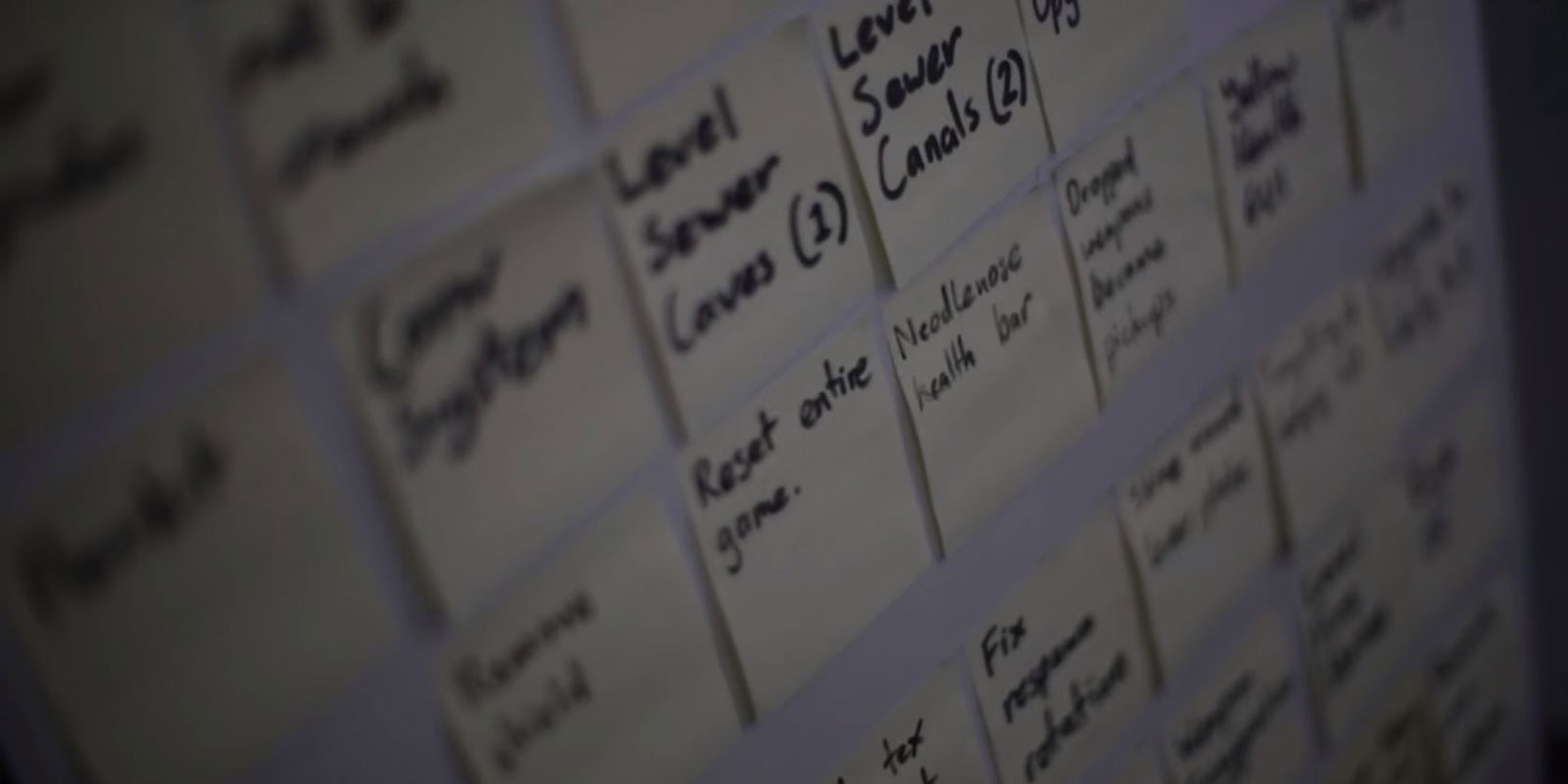Building a Game Design Portfolio for entry into AIE
One of the most common questions we get from people wanting to start our two year Game Design and Production program is;
What do I need to put in my Game Design portfolio?
The answer is…… there are lots of things you could include. Did you ever have to create something for a woodworking class or create a process/ instructions for people to follow? That can all count. If you haven’t that’s ok, we have an exercise that you might like to try to help boost your portfolio.
Don’t feel you have to create exactly the things outlined below but it is a decent place to start if you are unsure of what to include. If you feel like you want to know if what you have is on the right track, contact your nearest campus and organize to come in and gain feedback on your current portfolio.
Creating DLC or a Mission for your favorite game
Chances are you have done some kind of mental exercise like this without even really thinking it was game design. I am sure there has been times while playing a game you have thought “wouldn’t it be cool if” or thought of ways that a game mechanic could be expanded upon. While ‘wouldn’t it be cool if’ can get you into trouble later in your career as you try to manage the scope (size) of your game, when building your portfolio to get into AIE it is a great starting point. You will learn about managing scope in the while studying at AIE.
To start, think of your favorite game, I know it’s a tough choice but you know which it really is.
Now try thinking of what you would have loved to do in the game but for whatever reason (budget, time) the devs didn’t seem to have that mission/ challenge in there. We want you to plan that mission. Don’t worry, you won’t need to create all the animations or the art, you won’t even have to write a single line of code. All we want you to do is create the idea behind the mission and plan what would be involved to bring that to life.
Here are some things to consider when creating the mission:
- What is the objective?
- How do you communicate the objective to the player?
- Does it fit the rest of the game?
- What does the level layout look like?
- Are there story elements?
Get your idea down in writing
Now that you have a decent idea of what your mission will be in your head. It is important to get your ideas down in some way. This could be in a google doc, on graph paper etc. Anything so that if someone wanted to learn more about your idea without you being in the room, they would have the resources they need to do so.
You don’t need to write a lot, keep it short and to the point.
Rather than spending paragraphs explaining how the level may be laid out. Grab some graph paper (using Microsoft Paint is fine too) and show what the level may look like. Don’t worry about your art skills we won’t be looking closely at that. Simple boxes and different colours to represent enemy types works nicely.
The example below shows the original Super Mario Bros level design but you can also draw it top down like a map.
Before your interview
Game design is an iterative process, meaning you generate an idea, test it, then based off that test you make improvements to your original idea. While it may sound complicated you can follow these tips to make your portfolio even stronger.
Try explaining your mission/ DLC to someone who has played the game before. Do they have any feedback or questions that you might need to answer?
If they do that’s great; it means they are engaged in your idea. Think about the feedback they gave. At any point were they unsure about the objective, or how an area would play? If so, try re-writing that part to make it clearer.
Now try explaining your mission to someone who has never played the game before. This is a fantastic way to discover how clearly your information is presented. (You can’t guarantee your interviewer has played your favorite game…. even though it’s amazing and everyone should play it.)
What to bring to your interview
Congrats! You have done all the hard prep work. Now it’s time to have your interview.
Bring in a print out of your word or google doc and your level map if you created one on a separate piece of paper.
Your interviewer will have a look at what you have created and might ask you questions about the level or your process for designing it. They are not trying to catch you out or make you slip up. They, like you are game design nerds and are keen to find out about your process and why you want to become a game designer.
I would wish you good luck in your interview but you have now built up an awesome portfolio.
Looking forward to seeing you in the studio!

